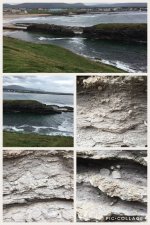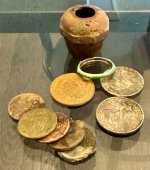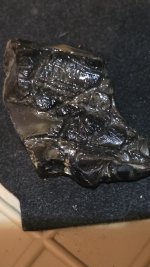
Hello,
We were walking in Bundoran in Donegal County, Ireland today and we encountered the geological feature shown in the picture (from above from cliffs and from very close up at beach level). We have three questions about it?
How would you call it? It looks to me like the tall rocks on the sides are sea stacks but isn’t the eroded bit in the middle more like a sea stump? Or are they something different altogether?
What type of rock is it (in the close-up pics) Our guess is that it is shale, but it could also be limestone. Which one do you think it is?
Please notice the ubiquitous fossils in the close-ups. Are we correct to think they are corals?
Than you in advance for answering all our questions.






